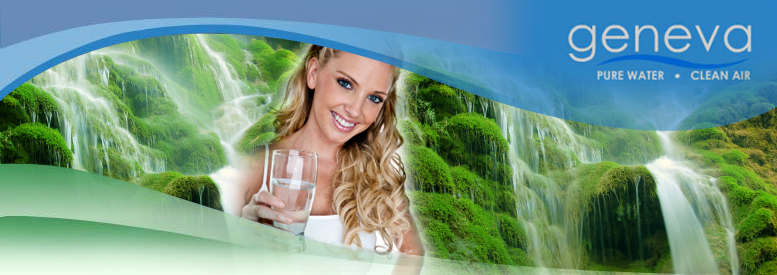 |
Water Softener Technical Details: • 48,000 grains capacity: There is an economy of scale – it takes less salt and water to restore, say 32,000 grains of capacity once, than to regenerate 8,000 grains four times. Additionally, it is much more efficient to restore partial capacity to a softening resin than it is to restore its full capacity. For example: while it takes 15 lbs of salt to restore about 90% capacity to one cubic foot of softening resin, it takes only 5 lbs to restore about 60% ! • There are, however, limiting factors to the “bigger is better” mechanisms: beyond a certain size, the unit gets impractically heavy and unwieldy. Also, any unit should be regenerated (backwashed) at least once every 10-14 days to counter the gradual compacting of the media / softening resin. It makes no sense, therefore, to size the softener to a capacity that exceeds the anticipated water demand of the user in any 10-14 day period. • Fully programmable (rather than fixed, one-setting-fits-all) 5-cycle control valve from Fleckenstein, one of the most renowned names in the industry: Since an insufficiently performing, or even malfunctioning, softener will draw more complaints from customers than one that is using more salt and water than necessary, the factory tends to adjust the settings on the softeners / control valves very conservatively (meaning lots of salt and water), so that they can handle most of the widely varying water conditions they may encounter across the country. Since the bulk of our softeners operate in Houston, on municipally treated water (which is quite homogenous across the city), and since Fleckenstein’s residential top-of-the-line “6700” control valve is fully programmable (micro-chip operated), we can (and do!) aggressively set each of the 4 stages involved in regeneration so as to maximize salt and water efficiency. Occasionally, this does result in a unit performing sub-par, in which case we simply readjust the settings. • Demand-oriented (rather than timer initiated) backwash & regeneration (more efficient): Although becoming less common, many softeners still use simple timers (clocks) to initiate regeneration. These timers initiate regeneration at FIXED intervals – anywhere from daily to biweekly – independent of the actual amount of water used, which is obviously not very efficient. If your water usage varies (for example weekdays vs. weekends), you end up regenerating prematurely or running out of soft water. • The demand-oriented control valve keeps track of your ACTUAL water usage and initiates regeneration accordingly and precisely. • Pressure reducer (30PSI) to assure optimal contact time of the salt brine with the resin during regeneration (more efficient): (Almost?) All control valves use venturis to draw in the brine from the salt tank during regeneration. Since the amount of draw (vacuum) depends on the flow, i.e. pressure, of the water, it fluctuates along with the water pressure, resulting in sub-optimal brine draw. The pressure reducer eliminates all those fluctuations (above 30 PSI) by reducing the water pressure to 30 PSI. Naturally, the other settings / components of the control valve are optimized to work with just this brine flow, generated by the venturi at 30 PSI. • Screened exit port to keep the resin from escaping the unit and getting into the pipes: Just a simple little safety device. Usually the resin (millions of tiny beads) expands into the “freeboard” (see earlier paragraph) during backwash and stays within the tank. On rare occasions, however, and for various reasons, the flow rate of the water is too high (or the tank is overfilled with resin) and resin is lifted out the exit port and into the pipes. While this is indeed a rare occurrence, if and when it happens it tends to be a real mess because the tiny resin beads plug up aerators, shower heads, and just about anything else. The little screen on your exit port keeps this from happening. • External (brass) bypass valve allows removal of the unit for service w/o interrupting the water supply to the house: An external (meaning outside the softener) bypass is definitely a must, so that you won’t be without water in the house if there is a problem with the softener, or even just while it is serviced. Sometimes the installer / plumber will fashion a bypass by plumbing a pipe loop with valves – an additional expense you won’t need to incur. • A “safety brine valve” secures the salt storage tank against possible overflowing: After the softener has drawn the brine from the salt tank during regeneration, it sends tap water to the salt tank to refill it. The control valve times this refill. Should it fail or malfunction, too much water – or even a continuous stream – might be sent to the salt tank, resulting in (you guessed it)…your own little flooding event! Your “safety brine valve” keeps this from happening. • A “brine grid” prevents the salt from “bridging” and
thus becoming unavailable for regeneration. Use your system ONLY on potable water supplies and within the following parameters: Iron: less than 6 ppm (parts per million, same as milligrams per liter) |
Geveva Purification Systems ~ ©2011 Since 1987 |
713.520.5900 |